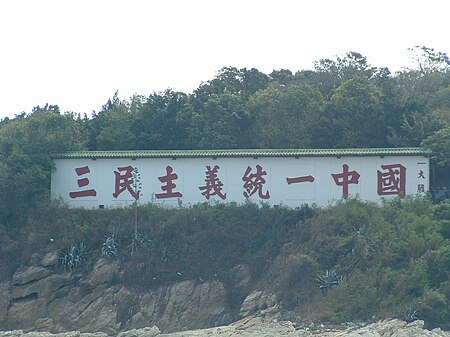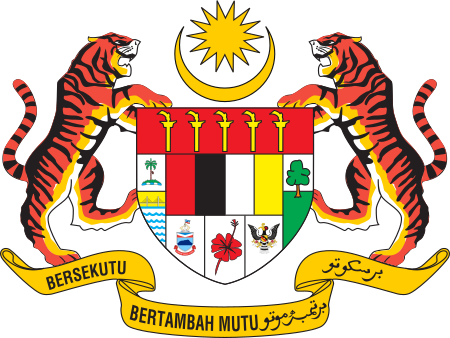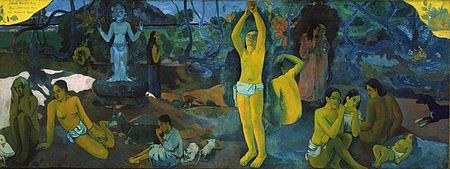Tai Le script
| |||||||||||||||||||||||||||||||||||||||||||||||||||||||||||||||||||||||||||||||||||||||||||||||||||||||||||||||||||||||||||||||||||||||||||||||||||||||||||||||||||||||||||||||||||||||||||||||||||||||||||||||||||||||||||||||||||||||||||||||||||||||||||||||||||||||||||||||||||||||||||||||||||||||||||||||||||||||||||||||||||||||||||||||||||||||||||||||||||||||||||||||||||||||||||||||||||||
Read other articles:

Voce principale: Law & Order: UK. La quarta stagione della serie televisiva Law & Order: UK è stata trasmessa per la prima volta sul canale canadese Citytv dal 4 novembre al 9 dicembre 2010 e trasmessa solo successivamente dal canale inglese ITV dal 21 marzo all'11 aprile 2011; questo è accaduto perché, nei mercati internazionali, la serie viene venduta in stagioni produttive di 13 episodi, mentre nel Regno Unito queste vengono spezzate in due blocchi che poi vengono trasmessi come du…

Questa voce o sezione sull'argomento Puglia non cita le fonti necessarie o quelle presenti sono insufficienti. Puoi migliorare questa voce aggiungendo citazioni da fonti attendibili secondo le linee guida sull'uso delle fonti. Segui i suggerimenti del progetto di riferimento. Voce principale: Puglia. Zone altimetriche della Puglia. Indice 1 Dati generali 2 Aspetto fisico 2.1 Pianure 2.2 Colline della Puglia 2.3 Montagne 3 Territori naturali 3.1 Fiumi 3.2 Laghi 3.3 Isole 3.4 Le coste 4 Note …

Irish actress Bernadette O'FarrellAs Maid Marian in The Adventures of Robin HoodBorn(1924-01-30)30 January 1924Birr, County Offaly, IrelandDied26 September 1999(1999-09-26) (aged 75)MonacoOccupationActorYears active1947–1959Spouse(s)Frank Launder (1950–1997; his death)2 children Bernadette O'Farrell (30 January 1924 – 26 September 1999) was an Irish actress. She was born in Birr, County Offaly, Irish Free State.[1] She was married to the film writer, director and producer…

Сунь Ятсен — автор «трёх народных принципов» Три народных принципа (доктрина Саньминь, кит. трад. 三民主義, упр. 三民主义, пиньинь Sān Mín Zhǔyì, палл. сань минь чжуи) — политическая доктрина, разработанная китайским политиком и философом Сунь Ятсеном. Часть политической фи…

这是马来族人名,“阿都沙末”是父名,不是姓氏,提及此人时应以其自身的名“卡立”为主。 卡立·阿都沙末Khalid bin Abdul Samad2019年8月15日,卡立阿都沙末与美国驻马大使雷荷花(英语:Kamala Shirin Lakhdhir)会面 马来西亚联邦直辖区部长任期2018年5月21日—2020年2月24日君主最高元首端姑莫哈末五世最高元首苏丹阿都拉首相马哈迪·莫哈末副职沙鲁丁前任东姑安南继任安努亚�…

Северный морской котик Самец Научная классификация Домен:ЭукариотыЦарство:ЖивотныеПодцарство:ЭуметазоиБез ранга:Двусторонне-симметричныеБез ранга:ВторичноротыеТип:ХордовыеПодтип:ПозвоночныеИнфратип:ЧелюстноротыеНадкласс:ЧетвероногиеКлада:АмниотыКлада:Синапсиды…

贝内德托·贝蒂诺·克拉克西Bettino Craxi第45任意大利总理任期1983年8月4日—1987年4月17日总统亚历山德罗·佩尔蒂尼 弗朗切斯科·科西加副职阿纳尔多·福拉尼前任阿明托雷·范范尼继任阿明托雷·范范尼 个人资料出生(1934-02-24)1934年2月24日伦巴第米兰逝世2000年1月19日(2000歲—01—19)(65歲)突尼斯哈马麦特国籍意大利政党意大利社会党儿女Bobo、Stefania 克拉克西在突尼斯的墓地。 贝�…
2020年夏季奥林匹克运动会马来西亚代表團马来西亚国旗IOC編碼MASNOC马来西亚奥林匹克理事会網站olympic.org.my(英文)2020年夏季奥林匹克运动会(東京)2021年7月23日至8月8日(受2019冠状病毒病疫情影响推迟,但仍保留原定名称)運動員30參賽項目10个大项旗手开幕式:李梓嘉和吳柳螢(羽毛球)[1][2]閉幕式:潘德莉拉(跳水)[3]獎牌榜排名第74 金牌 銀牌 銅牌 �…

Questa voce o sezione sull'argomento biografie è priva o carente di note e riferimenti bibliografici puntuali. Sebbene vi siano una bibliografia e/o dei collegamenti esterni, manca la contestualizzazione delle fonti con note a piè di pagina o altri riferimenti precisi che indichino puntualmente la provenienza delle informazioni. Puoi migliorare questa voce citando le fonti più precisamente. Segui i suggerimenti del progetto di riferimento. Jean Anouilh nel 1940 Jean Marie Lucien Pierre A…

Частина серії проФілософіяLeft to right: Plato, Kant, Nietzsche, Buddha, Confucius, AverroesПлатонКантНіцшеБуддаКонфуційАверроес Філософи Епістемологи Естетики Етики Логіки Метафізики Соціально-політичні філософи Традиції Аналітична Арістотелівська Африканська Близькосхідна іранська Буддійсь…

وادي ادام تقسيم إداري البلد السعودية معلومات أخرى منطقة زمنية ت ع م+03:00 تعديل مصدري - تعديل وادي ادام قرية سعودية، تتبع مركز وادي دفاق التابعة لإمارة منطقة مكة المكرمة. تقع في جنوب مكة المكرمة، وتبعد عنها قرابة 75 كم.[1] توجد في القرية مدرسة ابتدائية للبنين افت�…

Life's Greatest ProblemIklan untuk film tersebutSutradaraJ. Stuart BlacktonProduserJ. Stuart BlacktonDitulis olehAnthony Paul Kelly (cerita, skenario)PemeranMitchell LewisRubye De RemerSinematograferOtto Brautigan (beberapa sumber menyebut George Brauitgan)PerusahaanproduksiJ. Stuart Blackton Feature PicturesDistributorIndependent Sales CorporationTanggal rilis 3 November 1918 (1918-11-03) Durasi6 rolNegaraAmerika SerikatBahasaBisu (intertitel Inggris) Life's Greatest Problem adalah sebuah …

Device that launches projectiles This article is about guns in general, including cannons and other mounted weapons. For hand-held guns in particular, see Firearm. For other uses, see Gun (disambiguation). SIG Pro semi-automatic pistol Battleship USS Iowa fires a full broadside from its nine sixteen-inch naval guns A gun is a device designed to propel a projectile using pressure or explosive force.[1][2] The projectiles are typically solid, but can also be pressurized liquid (e.g…

PDS 70, première protoplanète directement photographiée. Une protoplanète est un embryon de planète de type planétoïde qui se forme dans le disque protoplanétaire[1]. Formation des protoplanètes Les protoplanètes se forment à cause des collisions qui se produisent entre les différents corps planétésimaux pouvant aller jusqu'à 1 kilomètre de diamètre qui s’attirent en raison de la gravité (ou tombent l'un vers l'autre, d'après la théorie de la relativité générale). S…

UluanKecamatanPeta lokasi Kecamatan UluanNegara IndonesiaProvinsiSumatera UtaraKabupatenTobaPemerintahan • CamatRobert ManurungPopulasi • Total8,501 jiwa (2.019) jiwaKode Kemendagri12.12.10 Kode BPS1206081 Luas109,00 km²Desa/kelurahan17 desa Uluan adalah sebuah kecamatan di Kabupaten Toba, Sumatera Utara, Indonesia. Geografi Kecamatan Uluan memiliki luas wilayah 109,00 km2.[1] Persentase luasnya sekitar 5,39% dari total luas Kabupaten Toba.[2] Kecama…

American actor (born 1944) Gary BuseyBusey in 2008Born (1944-06-29) June 29, 1944 (age 79)Goose Creek, Texas, U.S.OccupationActorYears active1967–presentSpouses Judy Helkenberg (m. 1968; div. 1990) Tiani Warden (m. 1996; div. 2001)Children3, including Jake Gary Busey (/ˈbjuːsi/; born June 29, 1944) is an American actor. He portrayed Buddy Holly in The Buddy Holly Story (1978), fo…

Artikel ini sebatang kara, artinya tidak ada artikel lain yang memiliki pranala balik ke halaman ini.Bantulah menambah pranala ke artikel ini dari artikel yang berhubungan atau coba peralatan pencari pranala.Tag ini diberikan pada Oktober 2022. Bank Komersial Saham Bersama untuk Investasi dan Pembangunan VietnamJenisMilik negaraIndustriPerbankan, Keuangan, KeamananDidirikan26 April 1957KantorpusatHoan Kiem, Hanoi, VietnamTokohkunciLê Ngọc Lâm, CEOPhan Đức Tú KetuaProdukAkun transaksiAsur…

خطوط تام الجوية الرحلة 3054 موازن الطائرة المنكوبة العمودي ملخص الحادث التاريخ 17 يوليو 2007 البلد البرازيل نوع الحادث تخطى المدرج الناجمة عن وضع السلطة غير النظامية بسبب الطقس السئ بسبب خطأ الطيار وعاكس الدفع المتعطل للمحرك الأيمن والقوة الكاملة للمحرك الأيمن بسرعة الإقلا�…

Esta é uma lista de emissoras de televisão do estado brasileiro do Amapá. São 13 emissoras concessionadas pela ANATEL.[1][2] Pela lei, uma Retransmissora de Televisão (RTV) dentro da Amazônia Legal pode gerar programação local e comercializar espaços comerciais. As emissoras podem ser classificadas pelo nome, canal analógico, canal digital, cidade de concessão, razão social, afiliação e prefixo. Canais abertos Referências: [3] Nome CA CD Concessão Razão social Afiliação Prefix…

Para otros usos de este término, véase Kung-fu (desambiguación).Kung-fu Nombre chinoChino 功夫 TransliteracionesMandarínHanyu Pinyin GōngfuWade–Giles kung-fuBopomofo ㄍㄨㄥ ㄈㄨMinHokkien POJ kang-huWuRomanización kon fuCantonésJyutping gung fu[editar datos en Wikidata] Kung-fu (en chino simplificado, 功夫; en chino tradicional, 功夫; pinyin, gōngfu) es un término global para referirse a las artes marciales de origen chino (wushu o quanfa) basada en unos p…









